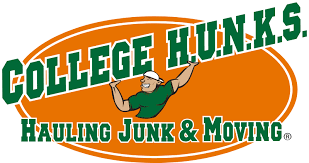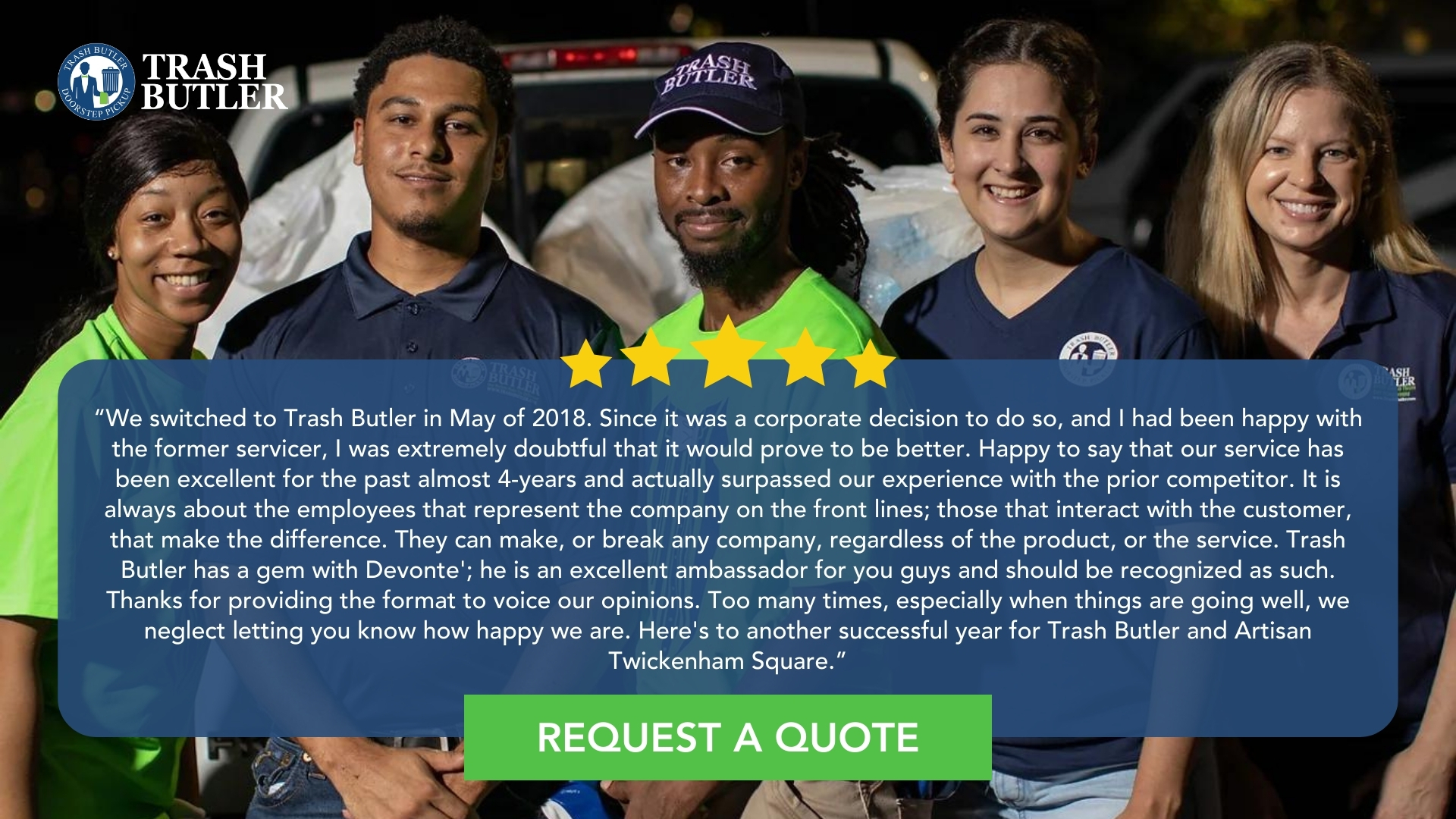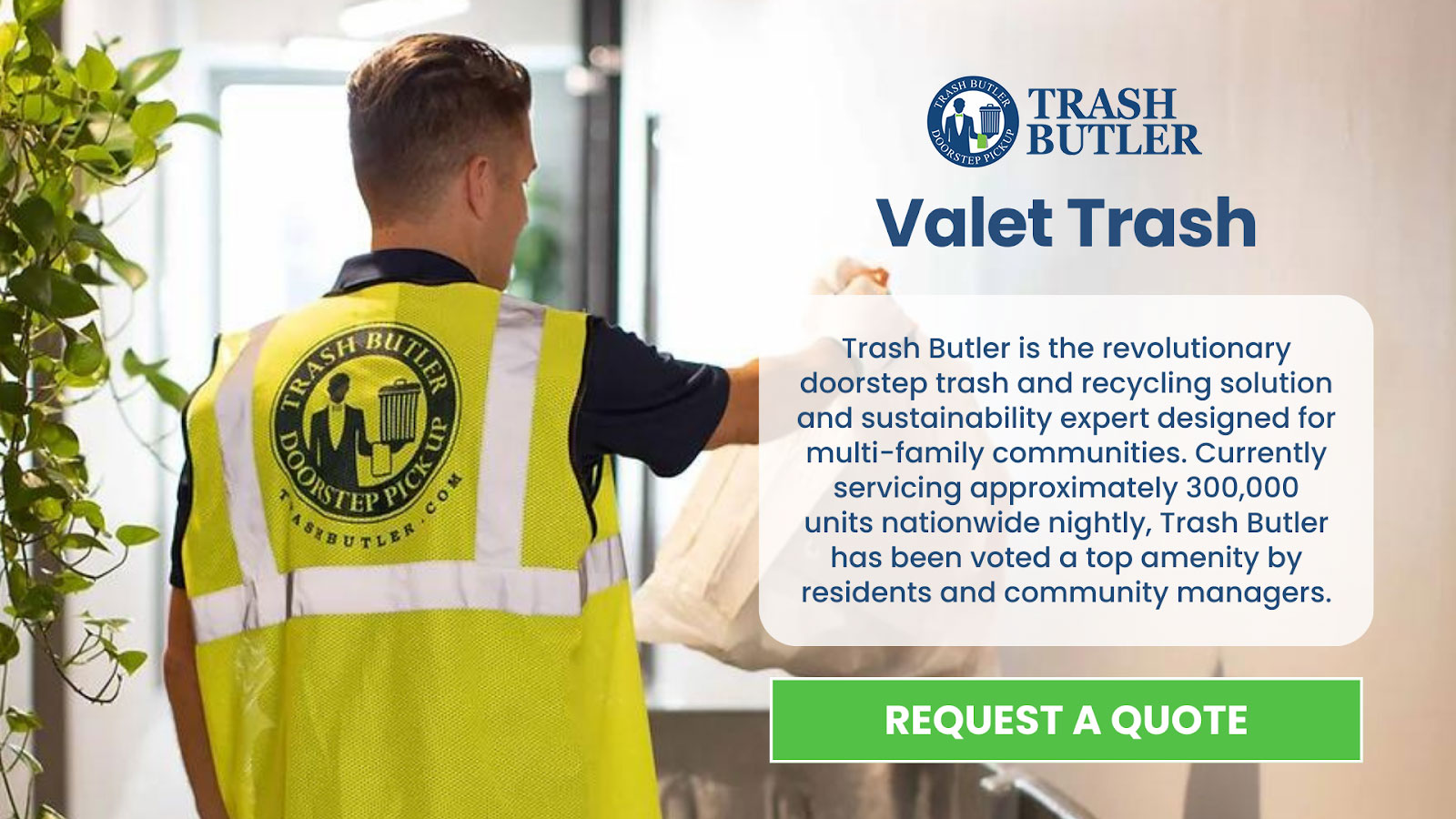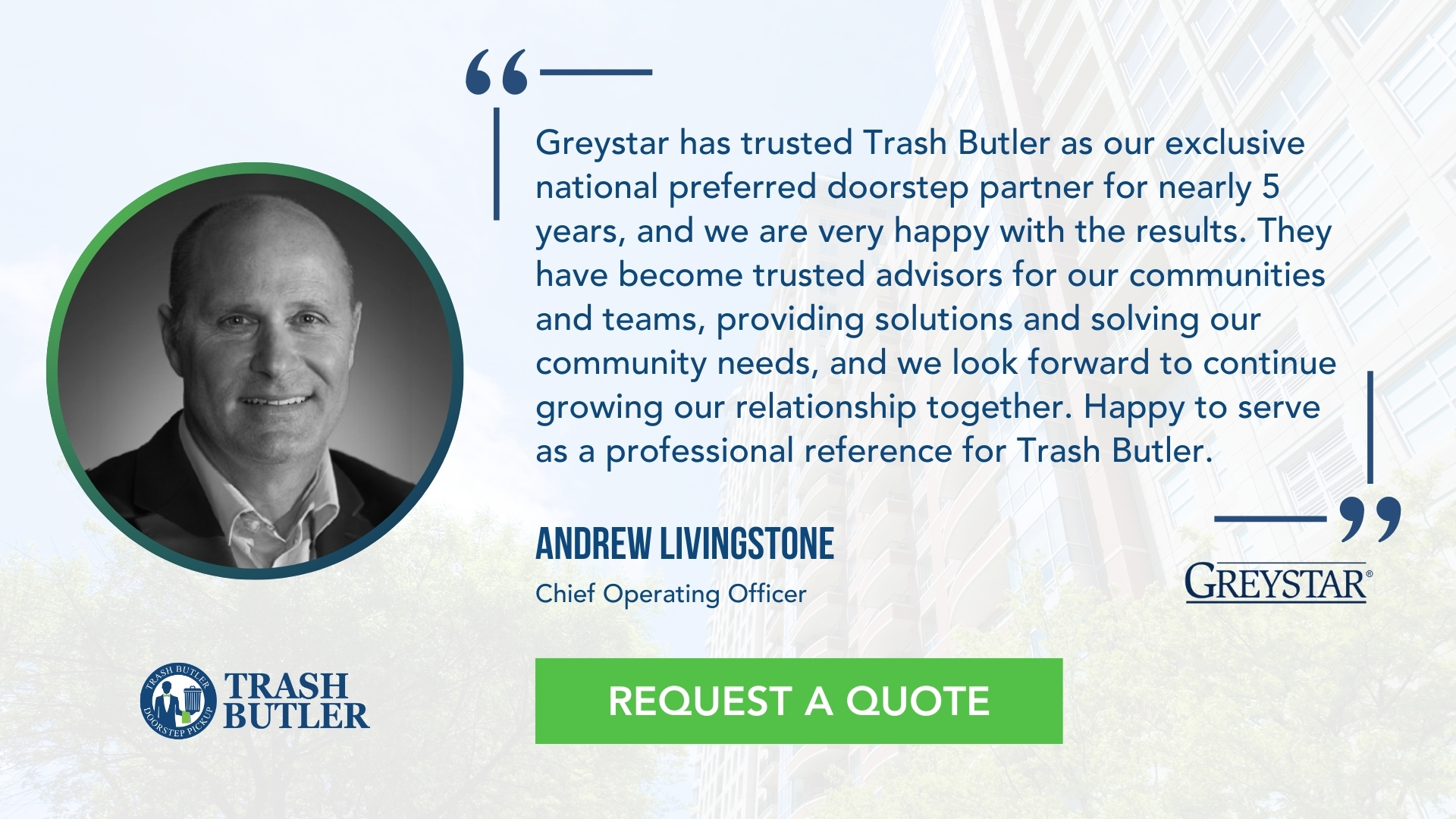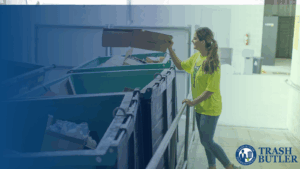Key Takeaways
- Booming Multi-Family Growth in Key Regions: Multi-family housing construction is booming across Sun Belt, Midwest, and coastal cities due to factors like affordability, job growth, and shifting household preferences.
- Trends Shaping Modern Developments: Key development trends include sustainability, smart amenities, and mixed-use spaces, making properties more attractive to today’s renters.
- Staying Competitive in High-Growth Markets: Property managers in high-growth regions can gain a competitive edge by optimizing amenities, improving operational efficiency, and staying ahead of demographic shifts.
Thinking about where to invest, build, or manage next? If you’re in the multifamily housing space, keeping a close eye on booming markets isn’t optional—it’s essential. As demand surges in specific cities and regions, the race is on to meet the needs of renters looking for well-managed, amenity-rich apartments.
In this guide, Trash Butler breaks down where multi-family construction is taking off across the U.S., and what it means for property owners, developers, and managers ready to scale smart.
Why Multi-Family Construction Is Surging In 2025
Today, multifamily construction is experiencing a notable surge, driven by economic, demographic, and lifestyle factors. Despite challenges such as elevated interest rates and construction costs, the demand for rental housing continues to outpace supply, prompting developers to invest in multifamily projects.
Economic And Demographic Drivers
The U.S. housing market is shifting, with multifamily projects outpacing single-family home construction. This trend is primarily attributed to the increasing unaffordability of homeownership, pushing more individuals towards renting. Job creation and population growth, especially in urban centers, fuel the demand for rental units.
Regional Growth Patterns
Certain regions are experiencing more pronounced growth in multifamily construction. For instance, cities like Dallas-Fort Worth, Phoenix, and Atlanta are leading in new unit deliveries, driven by corporate relocations, affordable housing demand, and strong job markets.¹
In California, San Benito County has emerged as the fastest-growing in terms of housing, with a 9% increase driven mainly by development in areas popular among Silicon Valley commuters.²
Market Outlook
While new construction is expected to moderate, the multifamily sector remains robust. The current surge in construction is anticipated to address the housing shortage, but as new developments come online, a balance between supply and demand is expected to stabilize the market. This environment presents opportunities for property managers and investors to capitalize on the sustained demand for rental housing.
Top Factors Driving Demand For New Multi-Family Housing
As urban landscapes evolve and demographic trends shift, multi-family construction continues to surge across the United States. Multiple factors fuel this growth, shaping both market demand and development priorities.
Urbanization And Population Growth
Rapid population growth in metropolitan areas is a primary force propelling demand for new multi-family housing. Cities such as Austin, Charlotte, and Nashville are seeing an influx of young professionals and families drawn by job opportunities and lifestyle amenities, making high-density, multi-family living increasingly appealing.
Evolving Household Preferences
Today’s renters prioritize flexibility and convenience over long-term commitments like homeownership. Modern multi-family developments cater to this shift, offering state-of-the-art amenities, accessible locations, and adaptable living spaces that meet the needs of singles, roommates, and families alike.
Housing Affordability Challenges
Rising home prices and increasing mortgage rates have made single-family homeownership less attainable for many Americans, particularly younger generations. As a result, multi-family units serve as an accessible alternative, offering cost-conscious solutions in desirable neighborhoods.
Corporate And Institutional Investment
Robust investment from private equity firms and real estate trusts accelerates multi-family construction. These entities are drawn to the sector’s resilience and potential returns, especially as rent growth exceeds other real estate categories.
Sustainability And Community Amenities
New developments prioritize environmentally friendly features and comprehensive amenity packages. Sustainability, recycling programs, and shared facilities such as fitness centers, coworking spaces, and valet services enhance community appeal and help properties stand out in competitive markets.
Multi-Family Construction Hotspots: The Sun Belt Surge
Major metro areas are transforming, fueled by demographic shifts and pro-development policies favorable for large-scale projects.
Dallas-Fort Worth: Unrivaled Activity
Dallas-Fort Worth leads the nation in new multi-family construction, consistently topping lists for delivered units and ongoing projects. Developers cite the area’s robust corporate relocations, substantial population influx, and abundant land as key catalysts. Submarkets throughout the metroplex are brimming with new, amenity-packed properties targeting a diverse renter base, from young professionals to families seeking high-quality housing.
Phoenix: A Magnet For Renters And Builders
Phoenix’s affordable cost of living and rapid employment growth have turbocharged its multi-family housing sector. Construction activity shows no signs of slowing, with year-over-year gains in new building permits and a pipeline thick with projects in suburban and core neighborhoods. The city’s ability to attract residents from pricier western markets is helping fuel this vibrant construction ecosystem.
Orlando & Tampa: Florida’s Booming Hubs
Demand for apartments in Orlando and Tampa has soared alongside population growth rates that outpace much of the country. Both cities are seeing a wave of multi-family developments close to job centers, entertainment districts, and universities. Builders are responding with innovative designs and upscale amenities, meeting the expectations of a mobile, discerning renter population eager for flexible, maintenance-free living.
Booming Midwest Cities With Rising Multi-Family Demand
While coastal metros often command the spotlight for their surging real estate markets, the Midwest is quietly experiencing an impressive renaissance in multi-family construction. Low living costs, economic diversification, and revitalized city centers draw developers and residents to key Midwest hubs. Let’s take a closer look at where demand is fueling the most significant growth:
Columbus, Ohio: Powered By Tech And Education
Columbus has become a magnet for young professionals, buoyed by its robust tech scene and university presence. The city’s business-friendly climate and influx of major employers, especially in logistics and healthcare, continue to attract renters seeking modern amenities and flexible leases. This has led to a sharp increase in new multi-family developments throughout vibrant neighborhoods like Short North and Easton.
Minneapolis-St. Paul: Stability Meets Lifestyle
The Twin Cities benefit from a wave of investment as diversified industries and thriving arts scenes bring renewed energy and jobs. Developers are racing to meet the growing demand for sustainable, well-managed apartments in downtown Minneapolis and burgeoning suburbs such as Edina and Bloomington. This region’s commitment to green space and transit connectivity makes it a standout for multi-family construction.
Indianapolis: Affordability And Urban Revival
Indianapolis offers a compelling blend of affordability and urban living, drawing a mix of millennials and professionals looking for larger living spaces and downtown conveniences. Multi-family projects here capitalize on walkable districts like Mass Ave, where residents can enjoy dining, entertainment, and unique local offerings—all within steps of their front doors. As migration trends continue, the pace of construction is expected to persist.
How Coastal Cities Are Reinventing Multi-Family Housing
Across the United States, coastal cities are rapidly adapting to meet the demand for urban living, transforming the landscape of multi-family construction. High-density populations and limited land availability have prompted both city planners and developers to adopt new approaches, reshaping how multi-family housing is conceived and delivered.
Embracing Mixed-Use Developments
Urban centers like Miami, San Diego, and Boston are leading the shift by prioritizing mixed-use developments. These projects blend residential units with retail, office spaces, and entertainment venues—creating vibrant, walkable communities. This integration maximizes land use and supports a seamless urban lifestyle that appeals to young professionals, growing families, and downsizers alike.
Sustainable Building Practices Take Center Stage
In response to regulatory requirements and resident expectations, multi-family construction in coastal regions is leaning heavily toward sustainability. Developers are pursuing LEED certification, employing energy-efficient building materials, and implementing water conservation systems. Amenities like rooftop gardens, electric vehicle charging stations, and robust recycling programs have become selling points, especially in competitive markets like Los Angeles and Seattle.
Responding To Climate Challenges
With coastal cities facing heightened risks from climate change and severe weather, resilience features are a central focus. Elevated structures, advanced drainage systems, and hurricane-resistant materials are being incorporated into new multi-family housing projects. This approach safeguards residents and ensures property longevity and operational continuity in the face of extreme events.
Prioritizing Technology And Connectivity
Forward-thinking developers are embedding innovative technology and high-speed connectivity throughout new complexes. From secure package lockers and app-enabled building access to integrated home automation features, coastal multi-family housing sets a new standard for convenience and efficiency. High-speed internet and coworking spaces cater to the growing demand for remote work, making these buildings attractive to a digitally connected clientele.
Key Metrics To Evaluate Multi-Family Construction Markets
Understanding the dynamics of multi-family construction requires more than a glance at cranes on the skyline or headlines touting the latest housing boom. Industry leaders, property managers, and investors rely on a set of key metrics to identify where the next surge in multi-family development will take place and which markets present sustainable, long-term opportunities.
Population Growth And Urban Migration
One of the primary indicators of a strong multi-family market is robust population growth, particularly in urban and suburban corridors that attract young professionals, families, and renters by choice. Migration patterns, driven by job opportunities and quality of life, signal future demand for apartment homes, prompting increased construction activity.
Job Market Health
Employment trends are tightly connected to housing demand. A low unemployment rate and significant job creation, especially in sectors like technology, healthcare, and education, typically correlate with strong multifamily construction markets. These thriving job markets draw new residents, who require flexible and high-quality housing solutions.
Vacancy And Absorption Rates
Low vacancy and high absorption rates are clear markers of an undersupplied market. These metrics indicate that new apartment units are quickly leased, encouraging developers to launch new construction projects. Monitoring these rates helps stakeholders anticipate shifts in supply-and-demand dynamics and adjust their strategies accordingly.
Rental Rate Trends
Steady or increasing rental rates are a green light for multi-family builders and investors. Healthy rent growth ensures project viability and signals sustained renter demand. Analyzing these trends market-by-market provides valuable insight into which metros are poised for stable long-term investment.
Regulatory Climate And Incentives
Local regulations, zoning laws, and government incentives heavily impact the feasibility of new multi-family construction. Markets with streamlined approval processes and tax incentives often see accelerated development activity. Conversely, regulatory barriers can temper enthusiasm, regardless of underlying demand.
Opportunities For Property Managers In Booming Regions
As multi-family construction accelerates across several U.S. regions, property managers face various opportunities to enhance property value, attract residents, and elevate operational efficiency. The current landscape, marked by demographic shifts and evolving renter preferences, has amplified the importance of strategic decision-making for those managing multi-family assets.
Leveraging Amenities For Competitive Advantage
The surge in multi-family construction has intensified competition among communities. To stand out in booming markets, property managers are investing in premium amenities that cater to modern lifestyles—think smart home technology, in-unit laundry, and comprehensive recycling solutions. Managers can prioritize upgrades that maximize occupancy and retention rates by analyzing local trends and resident feedback.
Optimizing Sustainability Initiatives
Sustainability remains a top priority for developers and residents in rapidly growing regions. Forward-thinking property managers are implementing recycling programs, energy-efficient lighting, and water-saving systems to appeal to eco-conscious renters and reduce operational costs. In communities where multi-family construction is booming, proactive sustainability initiatives can align with local compliance requirements, helping properties avoid regulatory pitfalls.
Enhancing Operational Efficiency
Rapid population growth in key metro areas places additional demands on property management teams. Managers can efficiently scale their operations by streamlining maintenance processes, automating resident communications, and deploying technology-driven access control. Prioritizing efficiency becomes even more critical as portfolios expand in response to regional growth trends.
Adapting To Shifting Demographics
Booming multi-family construction is often driven by changing demographics, such as suburban migration or an influx of remote workers. Property managers who study and adapt to these trends are better positioned to design community events, tailor amenity offerings, and cultivate engagement that reflects the needs and lifestyles of their evolving resident base.
Final Thoughts
The surge in multi-family housing construction isn’t just a trend—it’s a fundamental response to evolving demographics, urban migration, and shifting lifestyle preferences. As the U.S. housing market adapts, developers, investors, and property managers who act strategically in high-growth regions stand to benefit most. Whether building new communities or managing existing ones, understanding where—and why—these booms are happening is key to staying competitive, maximizing ROI, and meeting modern renter expectations.
Request a Quote: Fill out a form to see how Trash Butler™ can benefit your community.
Read also:
- How To Market Valet Trash As A Premium Amenity To Prospective Tenants
- Why Offering Valet Waste Services Can Justify Higher Rent Prices
- The Growing Demand For Pet-Friendly Amenities In Apartment Complexes
Frequently Asked Questions About Where Multi-Family Housing Is Booming In The U.S.
What economic factors contribute to the boom in multi-family housing?
Economic factors such as job growth, rising wages, and increased demand for rental units are primary drivers behind the surge in multi-family construction. In addition, constraints on single-family housing supply and changing consumer preferences fuel investment and construction in this sector, especially among younger professionals.
How does population growth impact multi-family housing development?
As urban populations grow and demographic shifts favor cities and suburban cores, the demand for flexible, amenity-rich housing increases. Multi-family developments often provide the scalability needed to efficiently house growing communities, making them a preferred solution for municipalities looking to manage population surges.
How does multi-family housing affect local economies?
Multi-family construction stimulates local economies by creating jobs, increasing demand for goods and services, and enhancing property tax revenue. Additionally, these developments often attract diverse businesses and can revitalize neighborhoods, contributing to broader economic growth.
How do interest rates affect multi-family housing development?
Interest rates directly influence the cost of capital for developers and property investors. When rates are low, financing new projects and expansions is more attractive, driving a surge in multi-family construction. Conversely, rising rates can slow development as borrowing becomes more expensive.
What are the challenges faced by multi-family housing developers?
Developers often face regulatory hurdles, fluctuating construction costs, and community opposition. Accessing suitable land, securing financing, and adapting to shifting tenant preferences pose significant challenges.
Is the growth in multi-family housing sustainable?
The long-term sustainability of growth in multi-family construction depends on continued demand, responsive urban planning, affordable financing, and the capacity to deliver amenity-rich, environmentally responsible living solutions. With ongoing innovation in both design and services, such as comprehensive recycling and doorstep waste collection, the sector is well-positioned for enduring growth.
Sources:
- Gravitate CRE. (2025, April 21). 2025 Multifamily Trends: What CRE Pros Need to Know. Gravitate CRE. https://www.justgravitate.com/blog/2025-multifamily-trends-what-cre-pros-need-to-know?utm_source=chatgpt.com
- Leonard, C. (2025, June). Here’s where California is building the most housing. San Francisco Chronicle. https://www.sfchronicle.com/realestate/article/san-benito-home-california-20351378.php?utm_source=chatgpt.com


